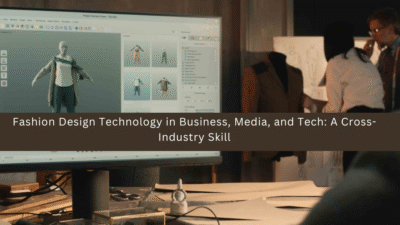In a world flooded with information, creativity is not a luxury — it’s a necessity. Graphic design has become one of the most powerful tools for individuals and organizations to create impact, communicate ideas, and conquer attention in a crowded digital space. Whether you’re building a brand, crafting educational content, or transforming business communication, design skills are at the core of success today. As we look toward 2025, the demand for skilled graphic designers is rising across industries — from business and management to healthcare and education. In this article, we’ll explore the trends shaping the future, the career scope, industry opportunities, and how choosing the best graphic design courses can help you thrive in this exciting landscape.
The Expanding Scope of Graphic Design
Gone are the days when graphic design was confined to print media. Today, designers work across:
- Digital platforms: Websites, apps, e-commerce platforms
- Marketing and branding: Visual storytelling for businesses
- Social media: Engaging content for Instagram, LinkedIn, TikTok
- Education: Designing online courses, infographics, interactive study material
- Entertainment: Graphics for games, OTT platforms, and films
- Management: Corporate presentations, data visualization, and internal communication tools
The skill set of a graphic designer now touches nearly every sector, making it a versatile and future-proof career option.
Trends Shaping Graphic Design in 2025
If you’re considering enrolling in one of the best graphic design courses, it’s important to stay updated with where the industry is heading. Here are some key trends predicted for 2025:
1. AI-Enhanced Creativity
Artificial Intelligence is rapidly entering the creative space. Tools like Adobe Firefly and DALL·E are helping designers automate repetitive tasks, giving them more time for innovative thinking. However, creativity and human intuition will remain irreplaceable.
2. 3D and Motion Graphics Dominate
Static images are giving way to 3D visuals, animations, and motion design. Brands want dynamic storytelling, whether through Instagram reels or website experiences. Learning motion design will be a major advantage.
3. Sustainability in Design
Consumers are increasingly conscious of the environment. Eco-friendly branding, minimalistic packaging, and sustainable visuals are becoming key themes.
4. Personalized User Experiences
Graphic design will play a huge role in creating personalized digital experiences — from custom app interfaces to AI-tailored websites.
5. Augmented Reality (AR) and Virtual Reality (VR)
AR filters, VR showrooms, and virtual events are opening up new avenues for designers. Skills in these areas could unlock exciting new career paths.
By following the right learning path through the best graphic design courses, you can stay ahead in these emerging fields.
Opportunities Across Industries
The beauty of a career in graphic design is that it doesn’t limit you to one sector. Here’s how different industries are using design today:
Business
Businesses need branding, advertising visuals, social media campaigns, product packaging, and even internal newsletters. Designers help businesses communicate their value, attract customers, and build brand loyalty.
Management
Corporate communication relies heavily on data visualization, infographics, presentations, and internal branding materials. Good design improves employee engagement and helps management present data in a digestible, inspiring way.
Education
Education is increasingly digital. E-learning platforms, digital textbooks, explainer videos, and interactive infographics all rely on strong graphic design to make learning engaging and accessible.
Healthcare
From patient education brochures to hospital websites and public health campaigns, the healthcare sector depends on designers to communicate vital information effectively.
Technology
Tech startups and established companies need designers for UI/UX, app design, website visuals, and digital marketing. In tech, a designer’s role is critical in bridging the gap between product and user.
Entertainment and Media
Movies, TV shows, gaming, OTT content, music albums — every part of the entertainment world needs compelling visual design to connect with audiences.
How to Choose the Best Graphic Design Courses
If you want to enter this exciting world, selecting the right education is crucial. When looking for the best graphic design courses, keep these tips in mind:
- Curriculum: Make sure it covers both foundational skills (typography, color theory, design principles) and modern technologies (motion graphics, UI/UX, AR/VR).
- Industry Exposure: Look for programs that offer internships, live projects, or collaborations with real companies.
- Faculty Expertise: Check if the faculty members have relevant industry experience.
- Portfolio Development: A strong portfolio is essential for securing jobs. The course should help you build one.
- Alumni Success: Research where past students are working. Good placement records are a strong indicator of quality.
- Flexibility: Some of the best graphic design courses now offer hybrid models — combining online learning with hands-on projects — giving you flexibility without compromising on quality.
Choosing wisely today could set you up for exciting opportunities across multiple industries in the future.
Final Thoughts
The world needs visual storytellers now more than ever. Whether it’s branding a startup, designing a mobile app, crafting an online course, or visualizing healthcare data, graphic design is at the center of innovation and communication.
By understanding the 2025 trends, recognizing the immense scope across industries, and enrolling in one of the best graphic design courses, you can build a career that’s not just creatively fulfilling but also highly relevant and future-proof.
The opportunities are everywhere — you just need the right skills, the right mindset, and a willingness to keep learning.



